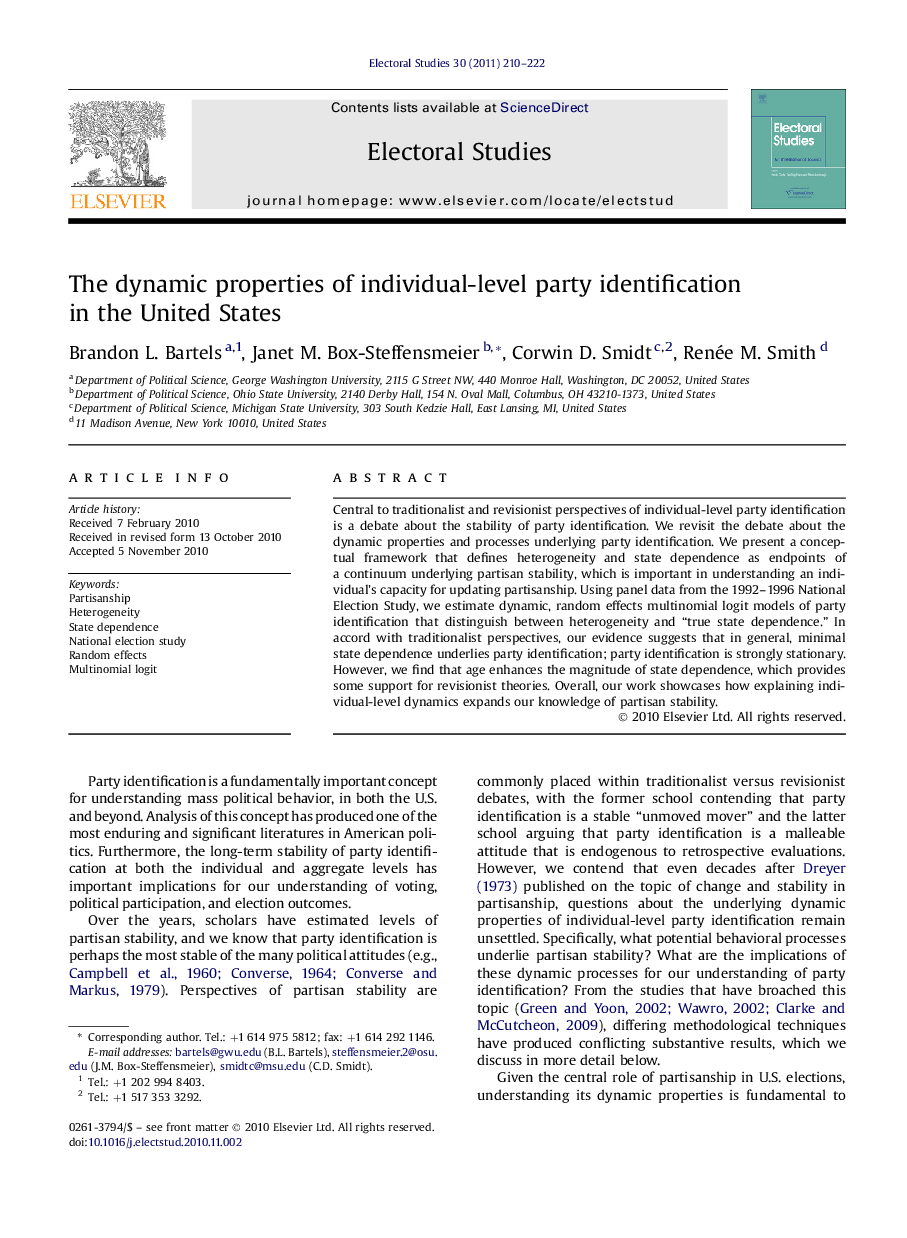| کد مقاله | کد نشریه | سال انتشار | مقاله انگلیسی | نسخه تمام متن |
|---|---|---|---|---|
| 1052244 | 946378 | 2011 | 13 صفحه PDF | دانلود رایگان |

Central to traditionalist and revisionist perspectives of individual-level party identification is a debate about the stability of party identification. We revisit the debate about the dynamic properties and processes underlying party identification. We present a conceptual framework that defines heterogeneity and state dependence as endpoints of a continuum underlying partisan stability, which is important in understanding an individual’s capacity for updating partisanship. Using panel data from the 1992–1996 National Election Study, we estimate dynamic, random effects multinomial logit models of party identification that distinguish between heterogeneity and “true state dependence.” In accord with traditionalist perspectives, our evidence suggests that in general, minimal state dependence underlies party identification; party identification is strongly stationary. However, we find that age enhances the magnitude of state dependence, which provides some support for revisionist theories. Overall, our work showcases how explaining individual-level dynamics expands our knowledge of partisan stability.
► Using panel data from the 1992–1996 National Election Study, we estimate dynamic, random effects multinomial logit models of party identification that distinguish between heterogeneity and “true state dependence”.
► Minimal state dependence underlies party identification; party identification is strongly stationary.
► Age enhances the magnitude of state dependence, which provides some support for revisionist theories.
Journal: Electoral Studies - Volume 30, Issue 1, March 2011, Pages 210–222